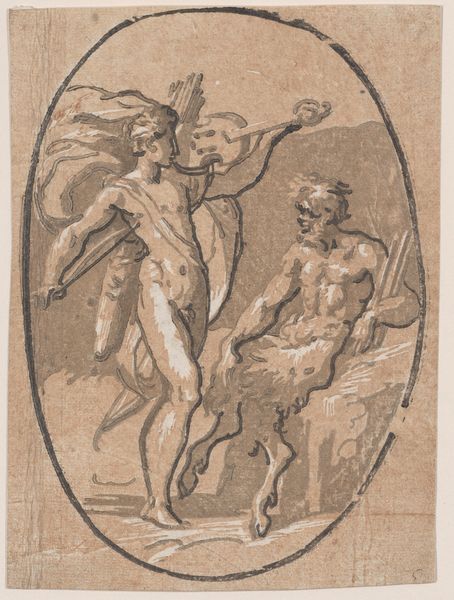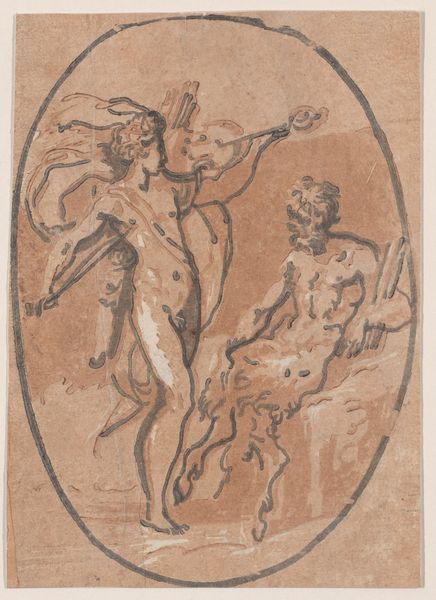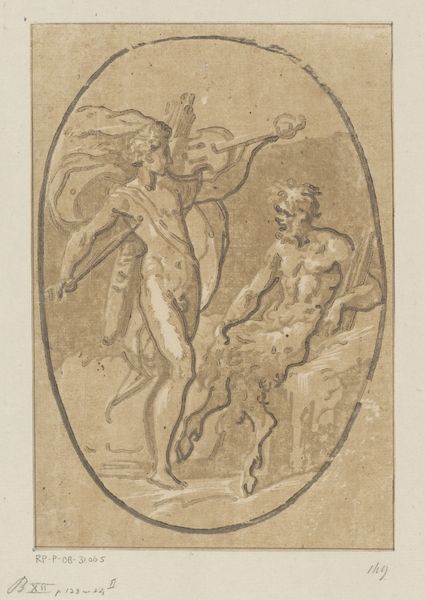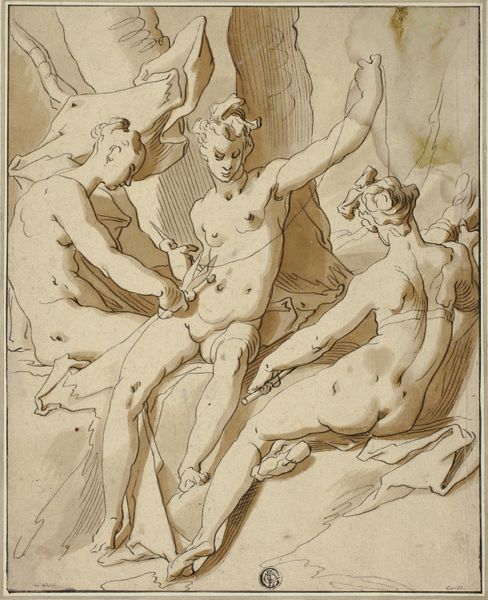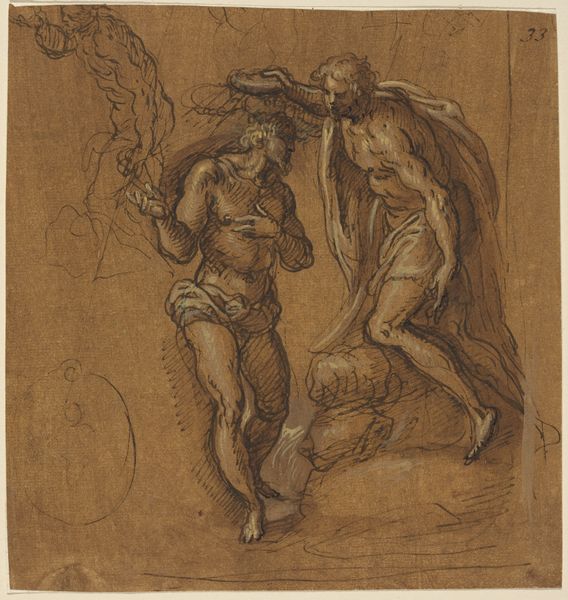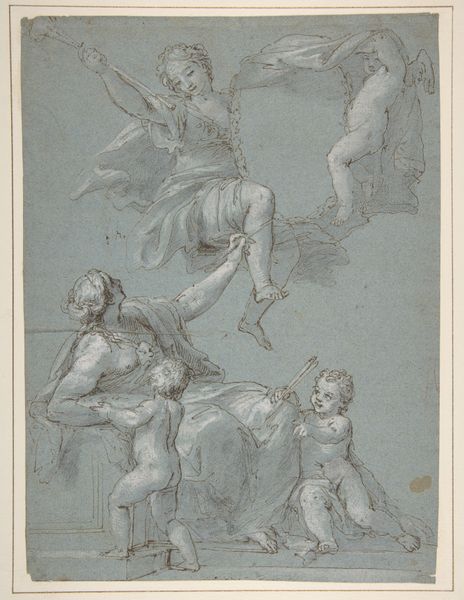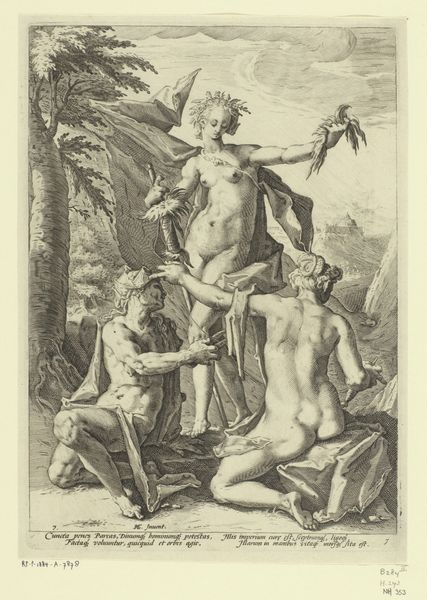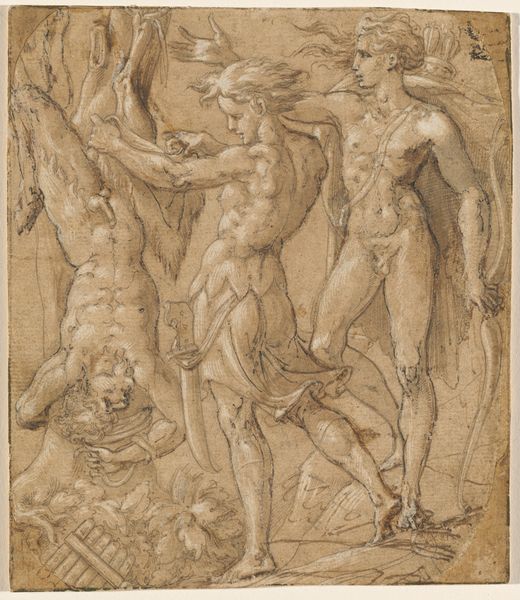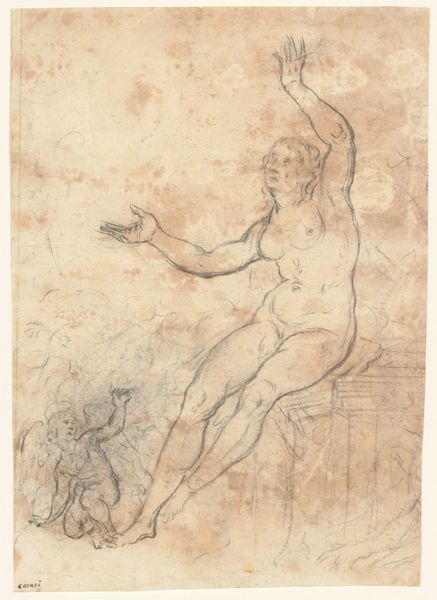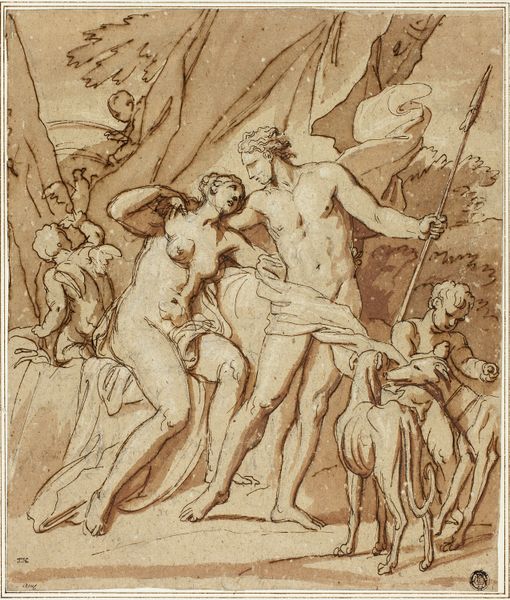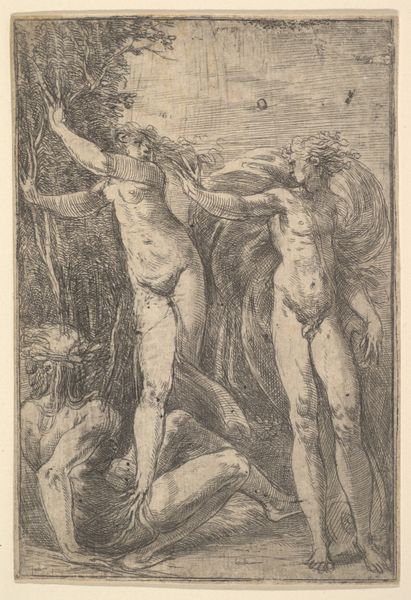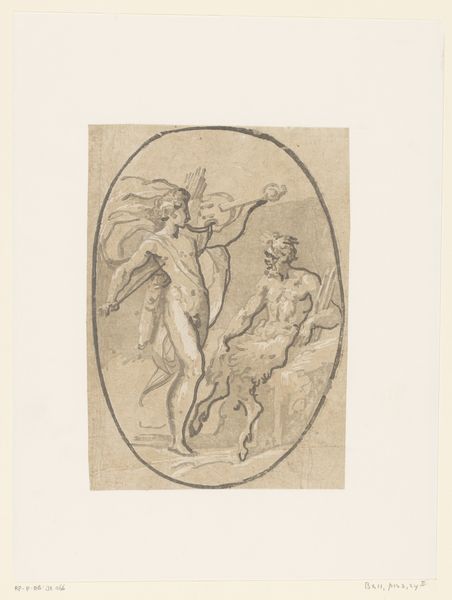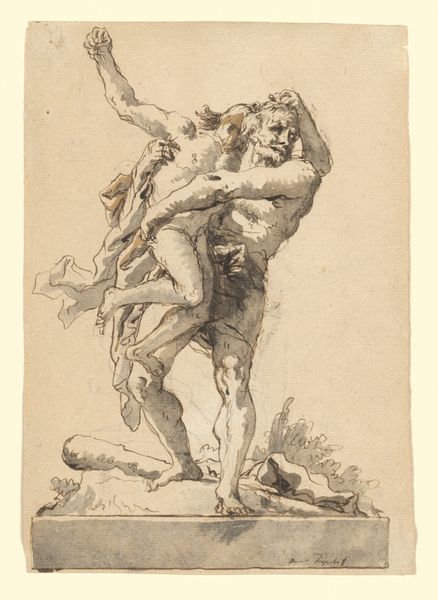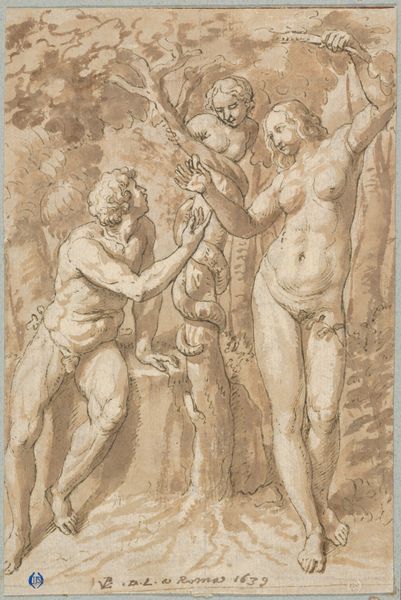
drawing, paper, ink
#
drawing
#
allegory
#
figuration
#
paper
#
11_renaissance
#
ink
#
history-painting
#
italian-renaissance
Dimensions: height 193 mm, width 140 mm
Copyright: Rijks Museum: Open Domain
Ugo da Carpi made this chiaroscuro woodcut, "The Contest Between Apollo and Marsyas," in the early 16th century. It depicts the Greek myth where Apollo, god of music, defeats the satyr Marsyas in a musical competition. During the Renaissance, myths like this were reinterpreted through the lens of humanist thought, often reflecting the era’s social hierarchies and power dynamics. The story can be seen as more than a simple contest: it’s about civilization versus the wild, order versus chaos. Apollo, often associated with reason and divine authority, stands in stark contrast to Marsyas, a figure of nature and instinct. This juxtaposition mirrors the Renaissance ideals of controlling and ordering the natural world through reason and art. In a moment charged with emotional tension, we anticipate the gruesome fate of Marsyas, who, upon losing, was flayed alive by Apollo. The image encapsulates both the triumph of Apollonian ideals and the brutal suppression of the "other." It prompts us to reflect on the narratives we inherit and the uncomfortable truths they may conceal about power, identity, and the cost of progress.
Comments
No comments
Be the first to comment and join the conversation on the ultimate creative platform.
